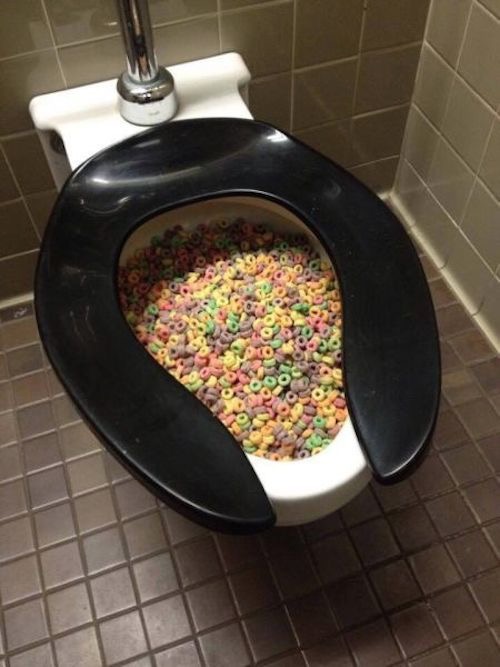Is it Feasible to Flush Food in the Toilet?
Is it Feasible to Flush Food in the Toilet?
Blog Article
Just how do you actually feel in relation to What Can Happen If You Flush Food Down the Toilet??

Introduction
Many individuals are frequently confronted with the predicament of what to do with food waste, especially when it pertains to leftovers or scraps. One common question that emerges is whether it's alright to purge food down the toilet. In this post, we'll explore the reasons why people could think about purging food, the repercussions of doing so, and alternate techniques for appropriate disposal.
Reasons people might take into consideration flushing food
Absence of understanding
Some people may not understand the prospective harm caused by purging food down the commode. They might wrongly think that it's a safe practice.
Ease
Purging food down the commode might look like a quick and very easy solution to throwing away undesirable scraps, especially when there's no close-by garbage can available.
Negligence
In some cases, people may simply choose to flush food out of sheer idleness, without considering the effects of their actions.
Repercussions of flushing food down the commode
Ecological impact
Food waste that winds up in waterways can contribute to pollution and damage aquatic ecological communities. Furthermore, the water utilized to flush food can strain water sources.
Pipes issues
Flushing food can result in blocked pipelines and drains pipes, creating pricey plumbing fixings and hassles.
Sorts of food that ought to not be purged
Fibrous foods
Foods with fibrous appearances such as celery or corn husks can get tangled in pipes and create clogs.
Starchy foods
Starchy foods like pasta and rice can absorb water and swell, resulting in blockages in pipelines.
Oils and fats
Greasy foods like bacon or food preparation oils ought to never be purged down the commode as they can strengthen and create obstructions.
Correct disposal methods for food waste
Using a waste disposal unit
For homes equipped with garbage disposals, food scraps can be ground up and flushed with the pipes system. Nonetheless, not all foods are suitable for disposal in this way.
Recycling
Specific food packaging materials can be recycled, lowering waste and minimizing ecological effect.
Composting
Composting is an environment-friendly means to throw away food waste. Organic products can be composted and used to enhance dirt for horticulture.
The importance of appropriate waste administration
Decreasing environmental injury
Correct waste management practices, such as composting and recycling, help minimize contamination and preserve natural resources for future generations.
Protecting plumbing systems
By avoiding the technique of flushing food down the bathroom, property owners can prevent costly pipes repairs and preserve the integrity of their pipes systems.
Verdict
To conclude, while it may be appealing to flush food down the bathroom for benefit, it's important to understand the potential consequences of this action. By taking on proper waste monitoring methods and throwing away food waste responsibly, people can add to healthier plumbing systems and a cleaner atmosphere for all.
THINK TWICE BEFORE FLUSHING FOOD DOWN YOUR TOILET IN FALLBROOK CA
Let’s be honest, we’re really supposed to be tossing rotten or leftover food in the compost bin or trash can. But many people like to place scraps of food down the drain of, say, their kitchen sink. That’s why the garbage disposal was invented: so we can continue to place certain foods down the drain without clogging our drain in the process. Smart.
But not all of us have the luxury of having a garbage disposal installed. So, you might continue to shove food down your sink drain anyway – or worse: you might flush them down your toilet! If you’re guilty of doing the latter, you’re going to want to stop, and here’s why:
Toilet Drains Aren’t Designed to Handle Food!
There’s your answer: food just doesn’t belong in your toilet. It may seem like your toilet drain is wider than the drains of your sinks, but truth be told, that isn’t actually the case. The narrower pipes of your toilet leave your plumbing at risk for clogging if you do happen to flush your food. In addition, food doesn’t break down as quickly that toilet paper and human waste do. In turn, this leaves your toilet at risk for a nasty clog.
Although a flush of a tiny pinch of food every now and then isn’t going to completely damage your toilet, there are certain foods that should absolutely not be flushed in your toilet at all. These include starchy foods like mashed potatoes, grains, hard pieces of food that are slow to break down, and fats and oils.
The latter categories of food are particularly problematic as they may harden, expand as they absorb water, break down slowly in your system, or generally create the perfect obstruction with their gelatinous composition. These are all things you don’t want in your plumbing system!
Experiencing a Toilet Clog?
Nobody’s perfect, and we all make mistakes. Sometimes one of the mistakes people make is flushing food down their toilet and later realizing that it wasn’t the best thing to do once they see that their toilet is now clogged. Uh-oh!

We were shown that report on Is it safe to flush food (especially rice) down the toilet? from a buddy on our other web property. Don't hesitate to take a moment to share this write-up if you liked it. I enjoy your readership.
Call Today Report this page